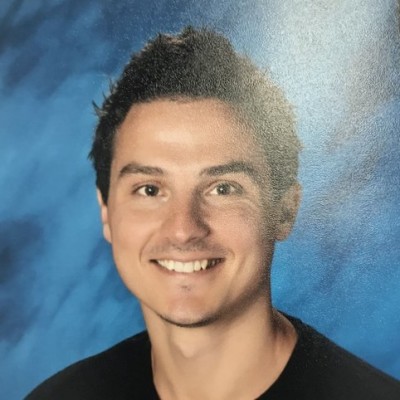This week, the Murdock Trust hosts our 31st annual Partners in Science Conference. You can find more information on the Partners in Science Program here.
If you were to walk into Dan Shay’s classroom at North Central High School, you might think you were lost. Unlike many high school science labs that may be stocked with more basic supplies, Dan’s space is equipped with the kind of sophisticated technology and instruments you would expect to find in a college or university.

“It’s a unique set up,” Dan explained during a recent conversation with the Murdock Trust. “Randy James began building our school’s Career and Technical Education (CTE) program in sciences about twenty years ago. So many kids come into science thinking their career path needs to be medical school. We want them to see that there are a lot of interesting, exciting, well-paying jobs in a variety of science fields that don’t require 12 years of school after you get your high school diploma.”
Dan took over the CTE program in 2015. After settling into his role, he applied to join the Partners in Science Program in 2018, something he had seen his predecessor do and that helped have a fundamental impact on the CTE program.
“Spending time in Partners really inspired Randy to invest in our efforts here,” Dan shares. “It’s not just enough to know how to do an experiment or collect data. We need our students to feel comfortable working with technology and also feel comfortable messing about with those tools. Not in a frivolous or dangerous way of course, but testing, tweaking, seeing what unexpected outcomes these instruments can generate. That’s what science is all about, exploring the unexpected.”
Through the Partners program, Dan was paired with Aaron Putzke, a researcher at Whitworth University studying zebrafish and cell differentiation. The work has significant potential implications in cancer research. Through his summer’s in Aaron’s lab, Dan gained fresh perspective and inspiration for his students.
“We were able to expand our repertoire in terms of what we could ask the students to do and how much they could work with the technology we have in our lab,” Dan says. “When our students are learning a new tool, we intentionally build in some time for them to just play with it and see what it can do before we dive into an official experiment. These students are all taking CTE classes as electives in addition to their core, required science classes so there is already an interest and a passion for science.
“We want to nurture that. We don’t want kids to feel like science is a boring, paint-by-numbers process. We want them to begin to think about the potential for science. What challenge might they be able to address through science? What good can they do in this world through science? The Partners in Science Program helped me gain a fresh perspective on how to bring science to life for my kids and it is so rewarding to see that light burn brighter and brighter for them as we work.”
As a teenager, our benefactor, Jack Murdock, was inspired by the potential of technology like the radio. The passion he developed in high school, tinkering in his workshop after class and on the weekends, would one day lead to a technological innovation (the oscilloscope) that would change countless industries. We are grateful for educators like Dan Shay and Aaron Putzke who invest in finding new ways to help today’s students see the potential value and impact of a career in the sciences.







